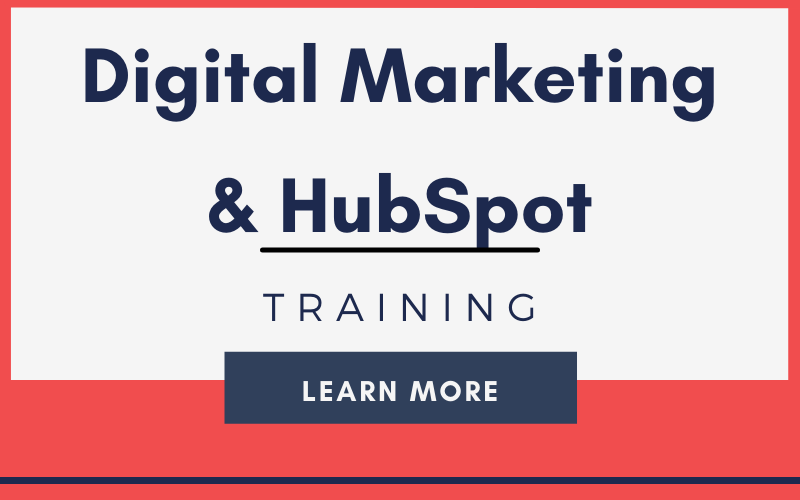How Certified Digital Marketers Generate Higher Customer Growth


Wondering about the value of having a Digital Marketing Professional on your payroll? According to McKinley Marketing Partners, Digital Marketing was the most sought-after marketing specialty for 2019. They estimate 61 percent of hiring managers plan to add Digital Marketing Professionals to their team this year alone.
That’s because Digital Marketing Professionals know how to generate customer growth for their companies.
But what strategies and tactics do Digital Marketers need to know to generate higher customer growth? And what type of digital marketing technology platform is best?
Let’s talk first about the strategies and tactics that Digital Marketers are expected to know in order to effectively do their job. Then we’ll explore how they can learn and stay up-to-date with all of those tasks.
Here are 10 essential skills that Digital Marketers need to know how to do:
- Develop effective digital marketing strategies
- Build brand awareness
- Create compelling content to educate and influence prospects
- Generate qualified leads
- Work attentively with sales team members to close more sales
- Work closely with customer service for feedback, reviews, testimonials, and case studies
- Focus on research and analysis to continually increase ROI for their companies
- Establish industry leadership for the company
- Acquire and maintain in-depth digital skills, which are essential in today’s workforce
- Become proficient in knowledge and use of technology
#1: Develop Effective Digital Marketing Strategies
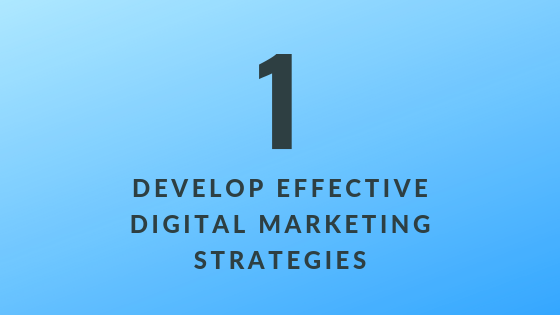
This is where it starts. You need a strategy to know how you are going to reach your audience. The purpose of your strategy is to use your currently-available resources, such as any digital channels you’ve created, tools, and your people, to meet the specific goals for your company to grow your customer base and revenue.
How do we do that?
There are many facets to this. It includes the following key areas that you need to know or learn how to do:
- Learn how to set SMART goals and objectives, which will allow you to meet your company’s ultimate customer-focused goals. SMART goals are specific, measurable, achievable, relevant and time-bound.
- Conduct digital strategy research. This allows you to learn as much as you can about your current processes. This research helps you to understand market demand for your services and products as well as who your ideal buyer is (and their persona) as well as the competition and the industry as a whole.
- Develop a digital channel strategy. These channels give you reach. You’ll learn more about search engines, display ads, email, and social media as it applies to this strategy.
- Create a content strategy. This allows you to develop concepts into pieces of content that you can then publish through those digital channels to reach your customers.
- Create a media strategy. Learn to develop one, as well as an ad budget for your promotions.
- Implement inbound marketing strategies. Inbound marketing strategies are important components of your digital marketing element. You need to know how to implement this method to attract – or draw customers to you through engagement. This allows these interested buyers to become leads and sales opportunities for your team.
- Implement analytic tools. You need to know how to gauge how well you are doing. That’s done by implementing analytics tools that also provide personalization and track the performance of each of your digital marketing campaigns.
- Manage your digital marketing and sales activities. Identify and implement tools and processes that allow you to efficiently manage your digital marketing and sales activities – you do have the time to get this done.
- Develop a digital project plan. This works to identify deliverables in specific tasks and the resources required to help you to achieve your company’s customer growth goals.
#2: Build Brand Awareness
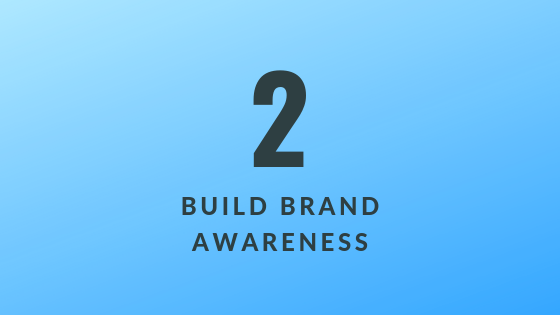
To perform well, companies must have an identifiable brand. You need to become a thought-leader in your industry.
Publishing content through your primary digital channels helps you to achieve this.
Primary digital channels include search engines, review websites, and social media sites that your would-be customers use to research about your products and services.
By creating impactful and valuable content on these channels, you’ll attract these customers to your company’s website, social media pages, and blog.
In this step, the focus is very much educational by defining the key aspects of your target buyers’ problems or challenges and showing them how your product or service addresses their needs and solves their problems.
The marketing tactics you identify as beneficial and implement across your digital channels should include a range of tools such as display advertising, social media marketing, content marketing, paid search, SEO, email marketing, automation, and analytics.
How is that done?
To build this brand awareness, you need a Digital Marketing Professional that can tackle tasks such as:
- Identify market opportunities
- Develop creative concepts
- Implement your digital media strategy
- Publish content and leverage online press releases
- Connect with key influencers in your market and industry
#3: Create Compelling Content to Educate and Influence Prospects
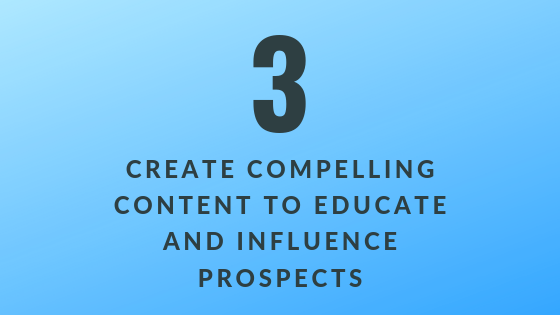
Content creation, and its marketing, is the single most challenging aspect of digital marketing activities. Every component of content creation must be focused on attracting your target audience and engaging with them on your website.
Ultimately, content must convert your prospect into a lead.
In order for this to occur, content needs to meet specific goals. Digital Marketing Professionals achieve this by ensuring the content is:
- Relevant to your target audiences’ interests; once this audience is defined, the marketer must go further to understand what their interests are to turn their heads and get them to click.
- Personalized to address their pain points and purpose; ensuring the content gives them a true reason to read it, by understanding, stating, and reassuring that the customer’s needs are understood.
- Educational in that it provides the customer with insight into how your company addresses those needs and provides a solution to their problems.
When content achieves these goals, it moves the potential customer further into the buyer’s journey, giving them valuable insight into what the product or service is, but also answering their question about how well your company fits their needs.
#4: Generate Qualified Leads
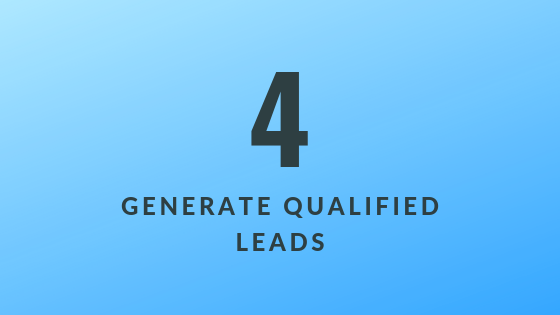
Having leads isn’t enough. Having qualified leads – those that your sales team can turn into customers – is valuable. To achieve this, you need your content to not just be great, but also to motivate your target audience to take action.
You need to be able to convert your target audience into leads.
How do we do this? There are a number of ways your digital marketing professional will achieve this including:
Calls-to-Action (CTAs)
CTAs are buttons and links used on your website that take the viewer to a custom landing page where they can then provide information, make a purchase, request a quote, or otherwise begin to work with you.
Landing Pages
These are content-rich pages that educate those who visit your website and encourage them to take the next step in their buyer’s journey. They work in conjunction with your CTA and include things like special offers and tools – i.e. eBooks, guides, white papers, studies, and other content offers – that encourage people to provide their contact information to you in exchange.
Forms
When someone visits your site, you want them to have a simple way to provide their personal information. Forms allow this. They are specific to the stage of the buyer’s journey as well as to the content offer, subscription services, product, or the service you plan to offer. Forms should collect, at least, the name and a valid email address of your customer.
Marketing Contact Database
Once you have the information from those forms, you then need a tool – such as the HubSpot Hub – that allows you to manage it. It should also include all the intelligence on the activity that person took on your website, social media channels, emails, or other areas. This is done through cookies set on a person’s computer. This type of intelligence is important because it allows you to remarket to those individuals, creating personalized messages based on the experiences they had on your website.
Thank You Page
It seems simple, but this is a confirmation page that is displayed right after the form is filled out. It is customized to your landing page and the buyer’s journey stage. And, it works to reaffirm why they filled out the form. For example, it may include a link to download the eBook they just signed up to receive.
Autoresponder Email
These emails are sent out to the email addresses that you’ve collected through the form. They are sent out as a series to help educate the interested buyer and, eventually, to verify that the email address is valid. The email may include a link to download a white paper or offer another product to the potential customer.
Workflows
Workflows are a series of automated actions that are triggered to occur based on a person’s action or contact information.
For example, the workflows can include messages that are sent to email addresses at various times to help engage with your leads and get them back to the buyer’s journey and the buying process. They also work to qualify leads so your sales team can step into them as needed.
Additionally, they can help you engage with your customers more effectively.
#5: Work Effectively with Sales Team Members to Close More Sales
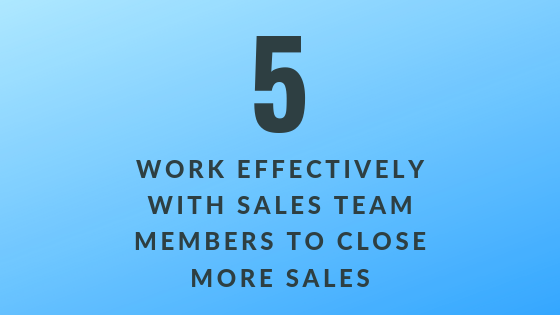
In today’s digital world, your marketing and sales teams and processes must be more integrated. To achieve this, consider the advantages of an Inbound Sales Methodology. It is fast becoming an emerging method for engaging prospects and leads with your sales professionals.
A key reason for this is that buyers control the sales process today. It’s no longer sales-managed. That means your sales professionals must meet your buyers where they are in the buyer’s journey and work to guide them through their decision-making process to become paying customers.
Several things make this method different. Inbound sales is a personalized and modern sales methodology that allows digital marketers and sellers to work together.
Their goal is to focus on the buyer’s pain points – or the things that are holding your buyer back from making a purchase.
They also act as a trusted consultant and adapt their processes as needed in the buyer’s journey.
When your digital marketers and sales professionals work together, this becomes feasible. They can do this by:
- Understanding who the ideal buyer is, especially when it comes to search and social media
- Creating and acquiring the right content that is specifically relevant to the desired buyer; then using that content to better engage with the prospects
- Adding insights for those buyers by creating and curating content; this allows the sales team to stay up to date and allows them to become trusted advisors
- Sharing content that builds trust, credibility, and engagement with the target audience to build brand awareness.
#6: Work Closely with Customer Service for Feedback, Reviews, Testimonials, and Case Studies

Digital Marketing Professionals also play a role in customer service. While they don’t provide customer service directly, they need to be able to use insight from customers to help the company to grow. How does this happen?
Your customers should love your product, but they should also become promoters for your business. That happens when you are giving them what they want and need.
For that to happen, your professional marketers need to be able to understand the product, understand the service delivery of it, and then work closely with the company’s customer service team to understand how to continually improve.
What information does the customer need? What type of content do they benefit from? Are there customers willing to give testimonials or reviews? Is there an opportunity to develop a case study on how you helped one of your customers overcome his or her challenges and meet a specific measurable goal?
Digital marketers also need to use customer feedback to help the company to grow to reach new customers and expand the target customer range as needed.
Your customer success comes from a group working together – it’s not a single person’s job.
View it as a team sport, one with professional marketers along with sales professionals, and customer service reps who work together to build the company’s customer advocate program.
This can be done in a variety of ways such as:
- Moving away from providing monetary awards as the primary way for customers to advocate or promote the company – you want them to do it on their own because they love the brand so much.
- Creating personalized and unique experiences for each individual customer, who then uses that positive experience to promote the company.
- Establishing clear goals, including customer-focused goals, to ensure you are bringing success to your advocates. Make sure the company’s goals are aligned with what you want to see your customer advocates bring to you, such as testimonials, referrals, reviews, and case studies.
#7: Focus on Research and Analysis to Continually Increasing ROI for Their Companies

Digital marketers are no longer just marketing your services. They are using detailed insight into operations to make decisions.
According to a report from McKinley Marketing Partners, 46 percent of hiring managers expect to be able to hire a Digital Marketing Professional with expertise in research and analysis.
Their job is multi-faceted. It should include the ability to effectively use technology, analytical tools, and intelligence, in order to research and then analyze. This should then allow them to create and operate effectively in a fast-changing digital marketing field.
If they are unable to handle this work themselves, they are missing key opportunities to adapt quickly enough to meet customer expectations.
#8: Establish Industry Leadership for the Company

Industry leadership is critical, and your certified professional marketers are a key asset in your rise to the top. Keep in mind that industry leadership isn’t about providing great products and services.
Rather, it’s about establishing your company as an expert in the related field.
This is done through your digital marketing efforts. Individuals in your company work to share your intelligence and work to educate your market, which helps you achieve industry leadership.
To do this, they must use numerous tools and methods. They work to:
- Create insightful and relevant content, used in long-form, blog articles, eBooks, white papers, and much more, helping you showcase your expertise
- Launch your own company webinars or podcasts designed for your target audience
- Become recognized as a market influencer through your social media and publishing channels
- Speak at conferences or events to share in-person educational insight into the industry topics that define leaders
- Contribute as a guest blogger with educational content to the websites that define and change your industry
- Participate in LinkedIn Groups that are specifically related to your industry, answering questions and supporting your efforts.
- Create educational videos for your YouTube and other channels that address cutting-edge industry content
- Show up in search results in your target market as leaders in research and education within your field
#9: Acquire and Maintain In-Depth Digital Skills Which Are Essential in Today’s Workforce
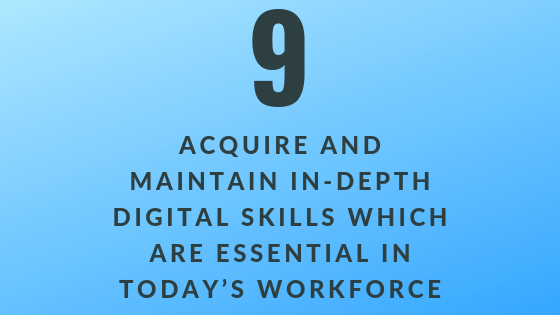
Digital marketing and sales professional positions are considered middle-skill jobs. And, according to a survey from Capital One, more than 8 in 10 middle-skill jobs (about 82 percent) require digital skills.
Yet, it is very common for those holding such positions to lack the needed skills in some of these areas, especially if they have no formal digital marketing experience.
What skills do your marketing professionals need to have?
Here’s a very specific skillset that any middle-skill position is likely to require today:
- Search Engine Optimization (SEO) and Search Engine Marketing (SEM)
- Content Marketing
- Data and Analytics
- Video Marketing
- Social Media Marketing
- Email Marketing
- Website Optimization
- Understanding and ability to work with marketing, sales, and operational technologies
- Proficient with productivity tools such as Office 365, Google Docs, database management, project management, and time tracking.
- Soft skills such as curiosity, strong work ethic, desire to listen and learn, multitasking, communications and collaboration, honesty, respectfulness, and ability to work well with others
Can you confidently say your team has these skills right now? If not, those skill gaps could be hurting their productivity and results.
#10: Become Proficient in Knowledge and Use of Technology
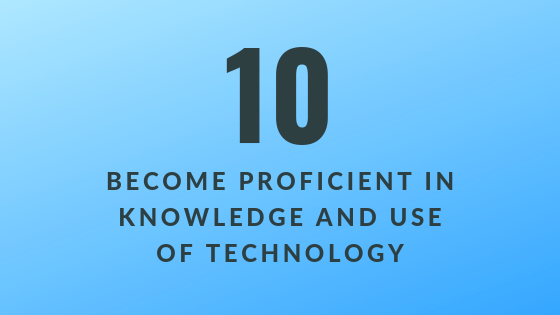
Here’s the bottom line – professional digital marketers simply must be very tech savvy to effectively sell your company to today’s customers.
Technology acquisition, implementation, and management are tasks you may think your IT department needs to manage. That’s no longer the case.
Rather, marketing’s use of technology matches or exceeds what your IT department manages.
There are plenty of examples of its importance.
The Gartner Group CMO Spend Research found that marketing technology is the single largest area of investment in marketing resources and programs today.
Check out this Wall Street Journal article written by Christopher Mims, called “Every Company Is Now a Tech Company.” You’ll learn that we’ve entered a time of upheaval where technology is driving connectivity, and artificial intelligence and automation are critical.
Every business has been impacted in every industry because of this change in tech demand.
According to Chiefmartec.com, professional marketers’ technology landscape includes an incredible list of tools and resources – they range widely from advertising and promotion to content and experience, social relationships, commerce and sales, data, and management.
Look at this chart to see just how many tools digital marketers need to use.
Get Digital Marketing and HubSpot Technology Training Together
Digital marketing is constantly changing. While you may have access to numerous training courses today, you need to not only understand digital marketing but also how to implement it within an advanced technology platform such as HubSpot.
You need a way to learn about digital marketing and its technology in a cohesive manner, where every component is taught together.
Here’s the key -
Xcellimark offers personalized onboard and training in both digital marketing and the HubSpot technology used to implement your campaigns.
It’s clear that you need to have a Digital Marketing Professional to help you propel your business forward in today’s digitally-focused world. It’s also important to recognize the importance of having the right technology platform in place to implement your strategies and plans.
That’s where Xcellimark excels – by working directly with you and your team to provide digital marketing and sales training and support, along with the onboarding and training you need to get the maximum benefit from the HubSpot CRM platform.
Find out more about our personalized digital marketing and HubSpot training.

Scott Lambert

